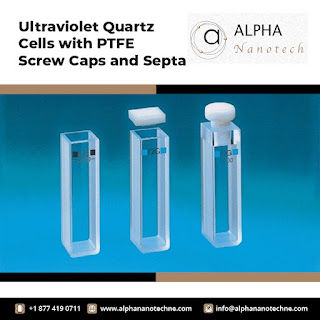Introduction
In the realm of analytical chemistry, precise and accurate measurements are paramount. Spectroscopy, a widely used technique, allows scientists to study the interaction between light and matter, providing insights into molecular structures and chemical compositions. Quartz cuvettes, transparent vessels designed to hold liquid samples for spectroscopic analysis, play a crucial role in ensuring the accuracy and reliability of these measurements. When combined with PTFE (polytetrafluoroethylene) caps, these cuvettes offer an enhanced level of sample protection, stability, and consistency. In this article, we delve into the world of quartz cuvettes with PTFE caps, exploring their features, benefits, applications, and how they contribute to advancing scientific research.
Understanding Quartz Cuvettes
Quartz cuvettes are manufactured from high-quality, UV-transparent quartz glass. This type of glass is chosen for its remarkable optical properties, allowing it to transmit a wide range of wavelengths, from the ultraviolet to the visible and near-infrared regions. These cuvettes are available in various pathlengths (the distance light travels through the sample) to accommodate different concentration ranges and measurement needs.
 |
| Quartz Cuvettes With PTFE Caps |
Benefits of Quartz Cuvettes:
Optical Clarity: The exceptional transparency of quartz glass ensures minimal interference with the wavelengths being analyzed. This property is crucial for accurate spectroscopic measurements, as any distortion or absorption could lead to erroneous results.
Chemical Resistance: Quartz is highly resistant to many chemicals, making it suitable for a wide range of sample types. It remains stable even when exposed to corrosive substances, ensuring the integrity of both the cuvette and the sample.
Temperature Stability: Quartz cuvettes can withstand a wide temperature range, from cryogenic temperatures to high temperatures. This characteristic is essential for experiments that involve temperature variation.
Reusability: Quartz cuvettes are reusable after proper cleaning and sterilization, making them an economical choice in the long run.
The role of PTFE caps
Polytetrafluoroethylene (PTFE) caps are frequently used in conjunction with quartz cuvettes to provide an additional layer of protection and stability for the sample. PTFE is known for its chemical inertness, nonstick properties, and resistance to extreme temperatures. When used as caps for quartz cuvettes, PTFE offers several advantages:
Preventing Contamination: PTFE caps create a barrier that prevents dust, moisture, and other contaminants from entering the cuvette and affecting the sample. This is especially significant while working with touchy or responsive substances..
Minimizing Evaporation: PTFE caps help reduce sample evaporation, maintaining a consistent sample concentration throughout the experiment. This is crucial for obtaining accurate and reproducible results, especially in long-duration experiments.
Chemical Compatibility: Just like quartz glass, PTFE is chemically resistant. This compatibility ensures that the cap does not react with the sample, preserving the sample's integrity and preventing any unwanted interactions.
Easy Handling: PTFE caps are designed for easy attachment and removal. Their nonstick nature makes them simple to handle, minimizing the risk of cross-contamination between samples.
Applications in Scientific Research
The combination of quartz cuvettes and PTFE caps finds applications across various scientific disciplines.
Biochemical Research: In studying biomolecules like proteins and nucleic acids, precise spectroscopic measurements are crucial. Quartz cuvettes with PTFE caps protect these sensitive samples from external influences, allowing researchers to accurately analyze their properties.
Environmental Monitoring: Analyzing environmental samples often involves working with complex mixtures. The chemical resistance of quartz cuvettes and PTFE caps ensures that the cuvettes can withstand a wide range of sample types, from water samples to soil extracts.
Pharmaceutical Analysis: Researchers in the pharmaceutical industry utilize spectroscopy to determine the composition and purity of drug compounds. The chemical resistance of quartz cuvettes and the protective nature of PTFE caps contribute to reliable results in drug analysis.
Industrial Quality Control: Industries that require stringent quality control, such as food and beverage or chemical manufacturing, benefit from the accuracy and repeatability provided by quartz cuvettes and PTFE caps.
Conclusion
In the world of analytical chemistry, precision and accuracy are non-negotiable. Quartz cuvettes with PTFE caps stand as a testament to how innovation in materials can enhance the reliability of scientific measurements. Their optical clarity, chemical resistance, and compatibility with a wide range of sample types make them indispensable tools in spectroscopy. Whether it's deciphering the intricate structure of biomolecules or ensuring the quality of industrial products, the partnership between quartz cuvettes and PTFE caps opens new avenues for research and discovery. As technology continues to evolve, these tools will undoubtedly remain at the forefront of analytical advancements, contributing to a better understanding of the molecular world around us.





